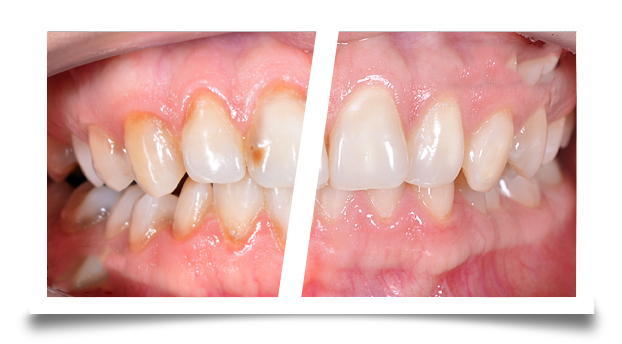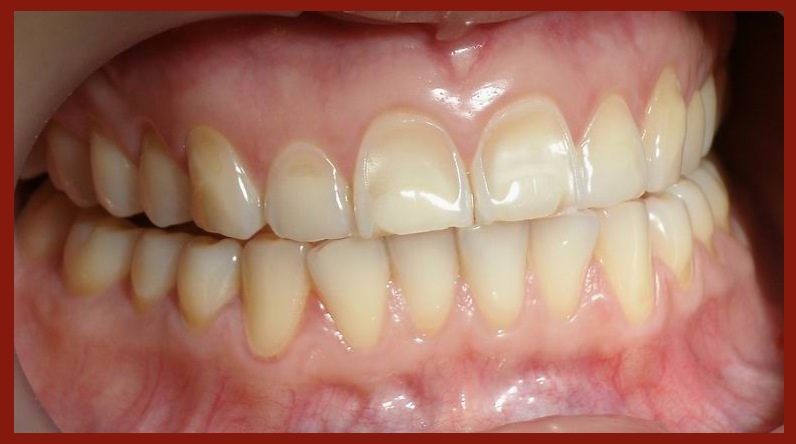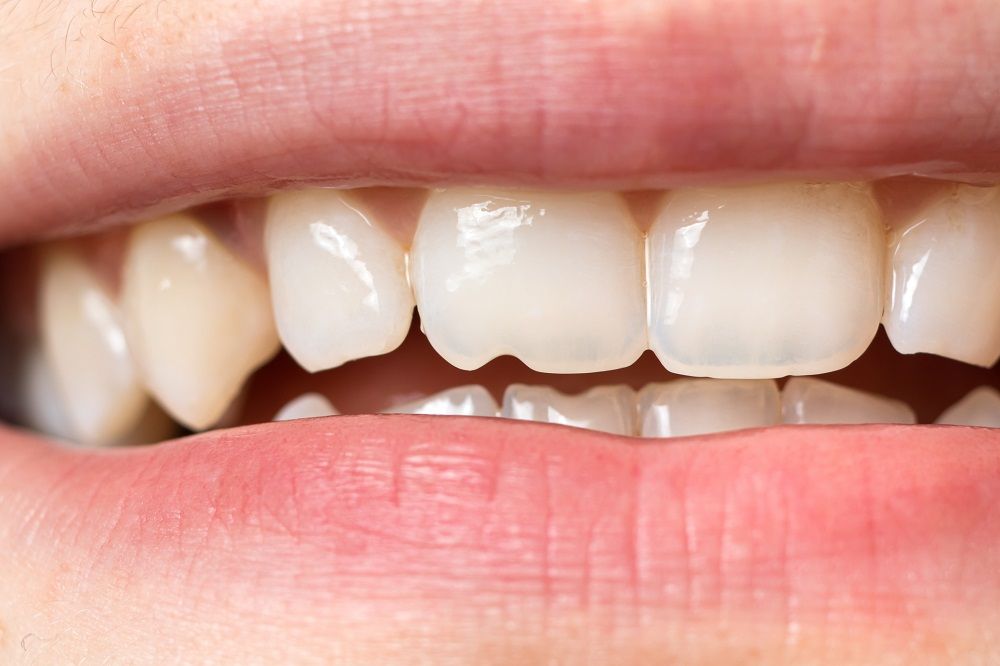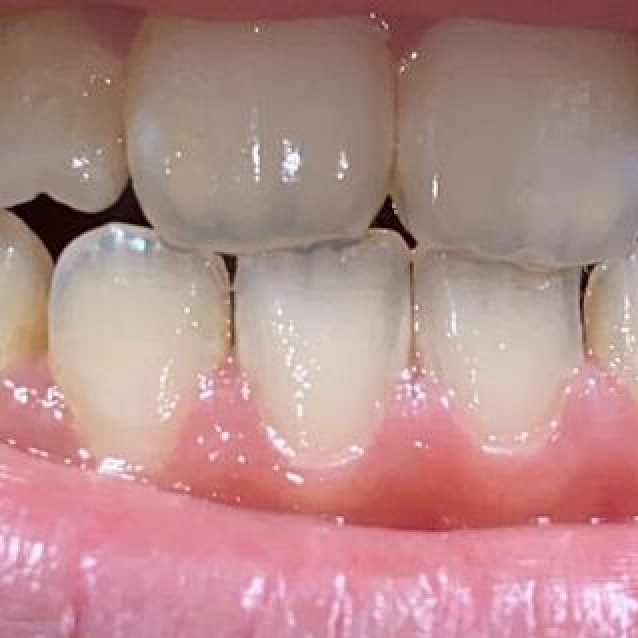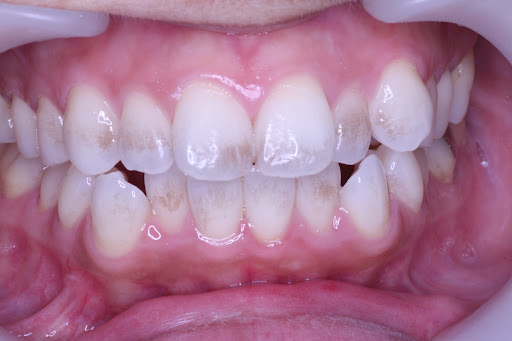Why Enamel Erosion Causes Tooth Discoloration: A Detailed Exploration

Tooth discoloration is a common cosmetic concern for many individuals, and one of the primary culprits is enamel erosion. As the enamel wears away, the teeth not only become sensitive but also change in color. This subpage will delve into why enamel erosion leads to discoloration, the underlying mechanisms, and what you can do to prevent and treat this issue.
The Role of Enamel in Tooth Appearance
To understand how enamel erosion causes tooth discoloration, it’s essential to first grasp the function of enamel in tooth structure and appearance. Enamel is the thin, translucent outer layer of the tooth, and although it appears white, it is actually semi-transparent. Beneath it lies the dentin, a yellowish layer that is much softer and less resilient than enamel.
Enamel helps maintain the whiteness of your teeth by reflecting light and protecting the underlying dentin. As enamel erodes, this protective layer becomes thinner or even disappears, allowing the yellowish color of the dentin to show through, resulting in a dull, discolored appearance.
How Enamel Erosion Causes Tooth Discoloration
Enamel erosion leads to tooth discoloration primarily because it exposes the underlying dentin. The dentin, naturally yellow or brown, gives the teeth a darker hue once the enamel thins. This can make the teeth look yellow, dull, or even stained.
Key Mechanisms Behind Enamel Erosion-Related Discoloration:
- Thinning of the Enamel
As enamel wears away, less of it remains to cover the dentin, which leads to a more prominent yellow or brown color. - Increased Staining
Eroded enamel is rougher and more porous than intact enamel. This makes it easier for pigments from food, drinks, and tobacco to adhere to the teeth, causing further discoloration. - Loss of Reflective Properties
Healthy enamel reflects light, giving teeth a bright and shiny appearance. When enamel is worn down, the light no longer reflects in the same way, making the teeth appear dull and lifeless. - Exacerbation by Acidic Foods and Drinks
Acidic foods and beverages not only erode enamel but can also directly stain teeth. As enamel becomes thinner, the teeth are more susceptible to these stains, intensifying the discoloration.
Factors Contributing to Enamel Erosion and Tooth Discoloration
Several lifestyle habits and health conditions contribute to both enamel erosion and tooth discoloration:
1. Diet High in Acidic Foods and Beverages
Consuming acidic substances like citrus fruits, soda, and wine can speed up enamel erosion and leave your teeth more vulnerable to stains.
2. Gastroesophageal Reflux Disease (GERD)
GERD allows stomach acids to flow into the mouth, leading to significant enamel erosion and increased tooth discoloration.
3. Poor Oral Hygiene
Neglecting oral hygiene accelerates plaque buildup, which produces acids that erode enamel and stain teeth. Over time, the combined effects of erosion and staining lead to noticeable discoloration.
4. Tobacco Use
Smoking or chewing tobacco not only stains teeth but also accelerates enamel wear, making the discoloration more severe as the dentin becomes exposed.
Identifying Enamel Erosion-Related Discoloration
Discoloration due to enamel erosion typically has distinct characteristics that differentiate it from other types of staining:
- Yellowing or Browning: As dentin becomes more exposed, teeth shift from white to a yellowish or brownish hue.
- Dull, Lifeless Appearance: Teeth affected by enamel erosion often lose their natural shine and appear flat or less vibrant.
- Generalized Discoloration: Unlike surface stains that may be isolated to specific teeth, discoloration due to enamel erosion affects all of the teeth evenly.
Preventing Tooth Discoloration from Enamel Erosion
Since enamel cannot regenerate, preventing enamel erosion and its subsequent discoloration is critical. Here are some strategies to help keep your enamel intact and your teeth bright:
1. Reduce Acidic Food and Drink Consumption
Limit your intake of foods and beverages that are high in acid, such as citrus fruits, soft drinks, and wine. When you do consume them, rinse your mouth with water afterward to neutralize the acids.
2. Practice Good Oral Hygiene
Brush your teeth twice a day with fluoride toothpaste, and floss daily to remove plaque and prevent erosion. Remember, brushing too hard can wear down enamel, so use a soft-bristled brush.
3. Stay Hydrated
Drinking water helps wash away food particles and acids from your teeth. It also promotes saliva production, which naturally protects enamel by neutralizing acids in the mouth.
4. Use Fluoride Products
Fluoride helps strengthen enamel and can slow the progression of erosion. Use fluoride toothpaste and consider fluoride treatments provided by your dentist to add an extra layer of protection.
Treating Tooth Discoloration Caused by Enamel Erosion
If enamel erosion has already led to tooth discoloration, there are several treatment options available to restore the appearance of your teeth.
1. Teeth Whitening
For minor discoloration, professional teeth whitening treatments can help lighten the teeth. However, whitening treatments may not be as effective on severely eroded enamel, as the dentin’s yellow color will still show through.
2. Dental Bonding
Dental bonding involves applying a tooth-colored resin to the surface of the teeth to cover discoloration and restore the appearance of enamel. This is a good option for more severe cases of erosion.
3. Porcelain Veneers
Veneers are thin porcelain shells that cover the front surface of the teeth. They are highly effective for treating discoloration caused by enamel erosion, as they completely mask the underlying yellow dentin.
4. Crowns
In cases where the erosion is extensive, dental crowns may be recommended to protect the tooth and improve its appearance. Crowns cover the entire tooth, restoring both function and aesthetics.
When to See a Dentist
If you notice any signs of tooth discoloration or suspect enamel erosion, it’s important to see your dentist promptly. Early intervention can prevent further enamel loss and discoloration. Your dentist can:
- Diagnose the extent of the erosion and discoloration.
- Recommend preventive strategies or treatments to protect your enamel.
- Provide professional whitening or restoration options for discolored teeth.
Conclusion: Protecting Your Enamel and Your Smile
Enamel erosion is a significant factor in tooth discoloration, but with proper care and prevention, you can minimize its impact. By understanding the causes of enamel erosion, adopting a proactive oral care routine, and seeking timely dental care, you can keep your smile bright and healthy.
Further Reading:
- How to Strengthen Tooth Enamel
- The Connection Between Tooth Sensitivity and Enamel Erosion
- Professional Whitening vs. Veneers: Which Is Right for You?
References:
- American Dental Association (ADA). “Enamel Erosion: Causes, Prevention, and Treatment.”
- National Institutes of Health (NIH). “Understanding Tooth Enamel and its Vulnerability to Erosion.”
- Cleveland Clinic. “Tooth Discoloration: Causes and Treatment Options.”

